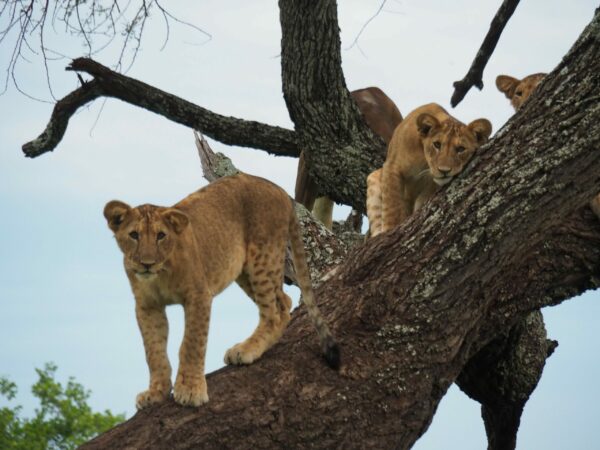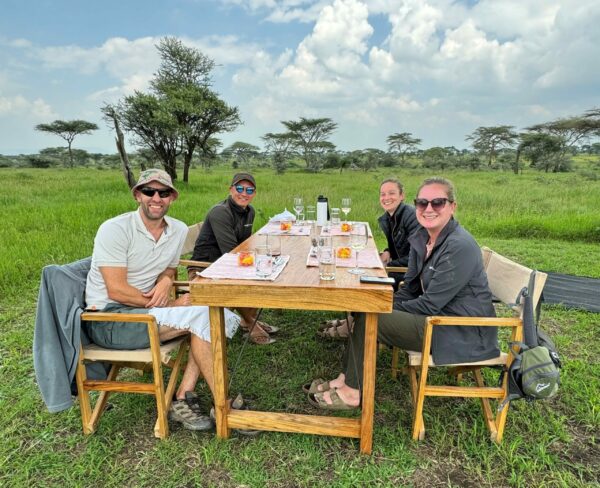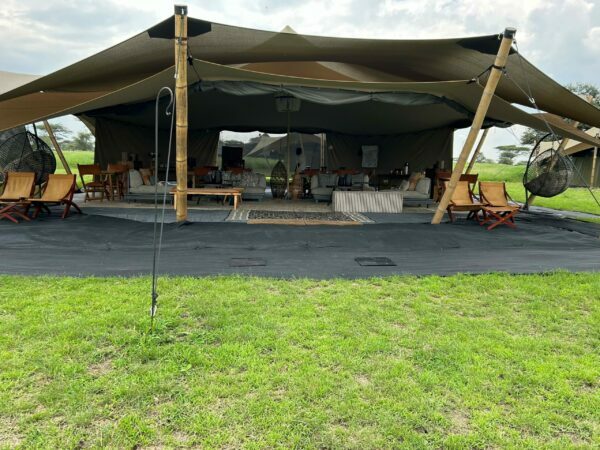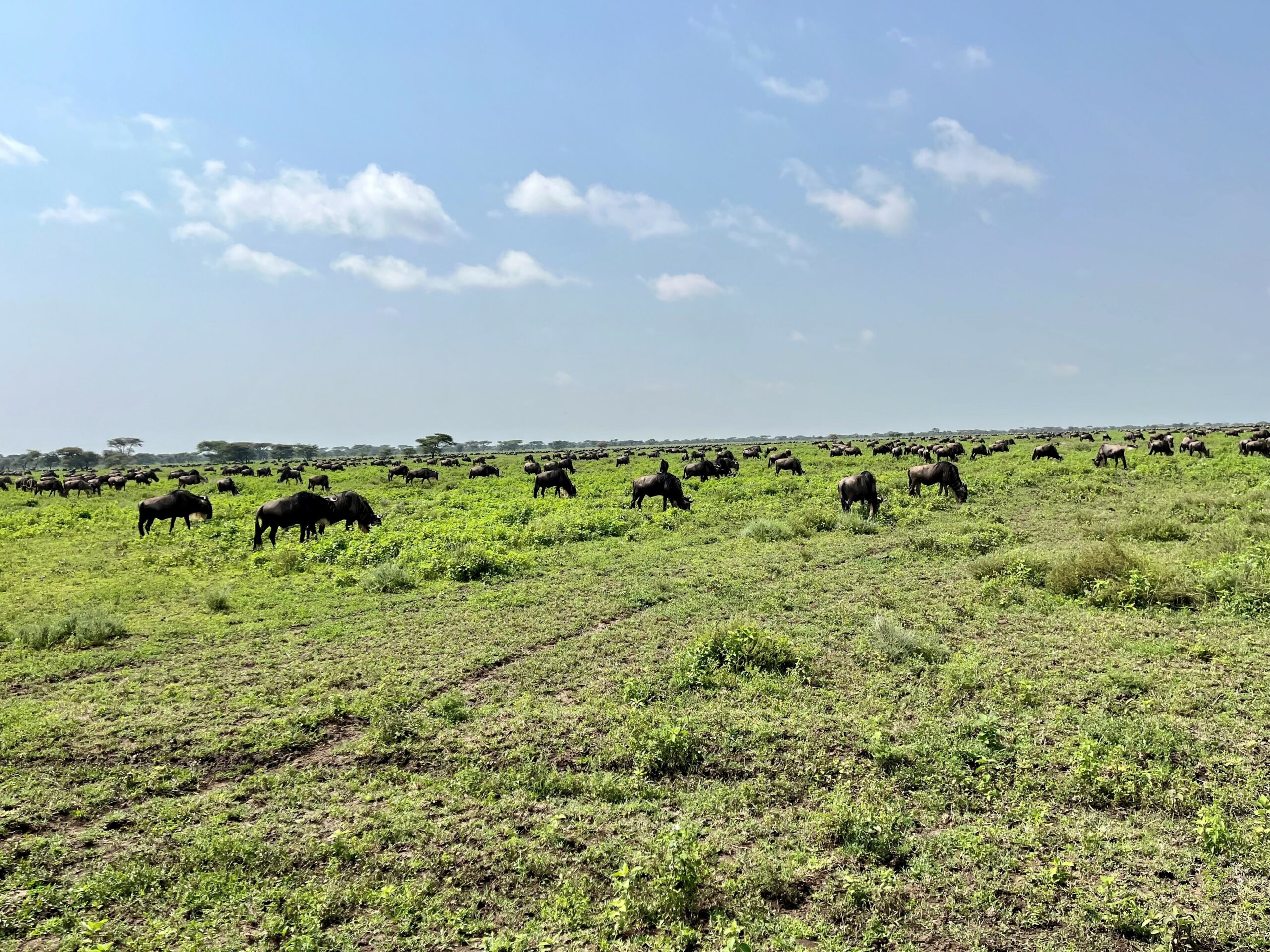When most wildlife enthusiasts think of safari, the Great Migration comes to mind. This year-round phenomenon takes place across the vast plains of the Serengeti in Tanzania and also crosses over into the Masai Mara in Kenya during part of the year. Millions of wildebeest make the clockwise journey from the Southern Serengeti via the Western corridor, then to the Masai Mara and back into Tanzania through the Eastern Serengeti. The reason for this continuous movement is to follow the food source which, in East Africa, is all dependent on the rain. The huge herds follow the rain because they know it will lead them to new grass and plentiful amounts of food to graze on.
The “Best” Time to see the Great Migration
This is a subjective question because it really depends on the experience you are looking for, but the short answer is – any time of year! While you have a chance to see the wildebeest herds year-round, it is all about being in the right place at the right time. At the end of the day, mother nature can be unpredictable, but by following the general rain cycles, we can best estimate where the herds will at a given time of year.
For those seeking to experience the Great Migration in a more exclusive setting, January – February is the ideal time, specifically in Tanzania’s Southern Serengeti. This is known as the “calving season” and the herds generally tend to be in the Southern Serengeti at this time giving birth. It’s a time of rebirth and new life where the wildebeest are full and happy after making the long journey from the tall grasses of the Masai Mara. The Southern Serengeti is lush and green because of the rains that moved through in November and December, which makes for excellent photography. Not only will you have high chances of seeing the wildebeest herds, but the resident wildlife is incredible at this time of year, especially big cats and predators.

Mobile Safari Camps

If you are keen to see the wildebeest herds of the Great Migration, your best bet is to incorporate a stay at a mobile safari camp. The soul purpose of these properties is to follow the movement of the migration, so guests will always have the best chance of seeing the natural phenomenon. In fact, it’s not uncommon to see the massive herds moving right through the camp! While the word ‘mobile’ may make a camp sound rather simple, travelers may be surprised to learn these facilities can be quite luxurious, even more than some permanent camps/lodges. They can range from ultra-luxurious, 5-star setups with all the creature comforts of home, to more basic options, where the focus is on a full immersion in your surroundings – there is truly something to suit every traveler’s preference.

This past January-February, four of us from Travel Beyond spent time at a few different mobile camps, each equipped with their own unique offerings. One such camp, Wilderness Usawa, is brand new to Tanzania, and promises to follow the migration through seven different sites across the Serengeti.
Visiting in mid-January, we were able to experience the Kusini campsite, set on a beautiful stretch of land surrounded by Acacia trees. Although the migration was about a two hour’s drive away at the time of our visit, Wilderness plans to offer a private vehicle to all of its guests, to ensure that no matter what your time and interest level in the migration, everyone can choose to spend their time on safari exactly how they wish.
Whether it’s babies you want to see (check out our colleague Joleen’s photo album from her visit to the Serengeti), or simply the beauty of Tanzania at the peak of its beautiful green season, a visit to the Southern Serengeti in January-February is likely to be a special experience for even the most seasoned safari goer. Being surrounded by thousands of wildebeest and zebra was truly a sight to behold and makes us excited to witness it at a different point in the year.
